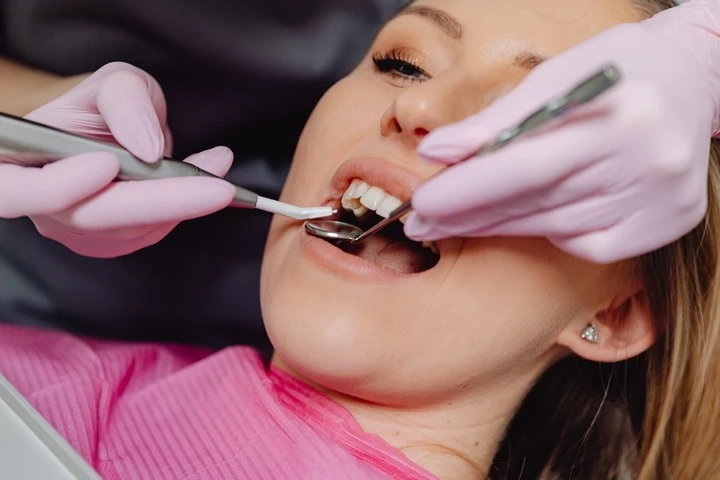Do you often have trouble sleeping because of loud snoring or waking up suddenly? It can be a common problem, making you feel tired during the day. One of the most common sleep-related issues is sleep apnea.
What is obstructive sleep apnea?
Sleep apnea is when a person's breathing pattern is interrupted while sleeping. Leaving sleep apnea untreated can stop breathing, which can happen often during the night.
There are types of sleep apnea:
ObstructiveCentralMixedObstructive sleep apnea occurs when the upper airway gets blocked partly or completely during sleep. Here is a simplified version:
When someone has an apnea episode, their breathing stops temporarily. It causes the chest muscles to work harder to reopen the airway. Breathing usually starts again with a loud gasp or body jerk. Apnea events can disrupt sleep, lower oxygen levels, and cause heart rhythm issues.
In central sleep apnea, the brain does not properly tell the muscles to breathe. It causes breathing to stop, even though the airway is open. A problem with the nervous system causes central apnea. It is not treated with oral appliances.
Mixed sleep apnea combines obstructive sleep apnea (blocked airway) and central sleep apnea (problem with brain signals).
Who gets obstructive sleep apnea?
Obstructive sleep apnea is more common in men than women. It affects about 25% of men and 10% of women. It can occur at any age but is more common in people over 40 and those who are overweight.
People with obstructive sleep apnea often have excess weight, a large neck, or physical traits that narrow their upper airway. These traits include a stuffy nose, low soft palate, large tonsils, or small jaw. All of these make the airway more likely to collapse during sleep.
Common symptoms of obstructive sleep apnea:
Most of the time, signs of obstructive sleep apnea are generally reported by the bed partner. Most common symptoms of OSA are:
Intellectual impairment, such as trouble concentrating, forgetfulness, or irritability:
Night sweats
Headaches
Snoring
Daytime sleepiness or fatigue
Restlessness during sleep
Sudden awakenings with a gasping or choking
Dry mouth or sore throat upon awakening
Dental appliances for treating sleep apnea:
Mandibular Advancement Devices (MADs)
Mandibular advancement devices are mouthguards that are worn during sleep. They hold the lower jaw and tongue forward. It opens up the airway so air can flow better.
MADs are customized to fit each person's mouth. They can be adjusted to find the right jaw position. MADs work well for mild or moderate sleep apnea. How well they work depends on the apnea severity and the person using them.
People who use MADs need to see a dentist regularly. The dentist checks that the MAD is working and makes any needed adjustments. Wearing the MAD each night as prescribed is important, too.
Overall, MADs are oral appliances that can help keep the airway open at night for some sleep apnea patients. Working with a dentist helps optimize their use.
Tongue-Retaining Devices (TRDs)
Tongue-retaining devices (TRDs) are another type of oral device used for sleep apnea. TRDs have a suction cup that attaches to the tongue. This holds the tongue forward during sleep.
Keeping the tongue forward prevents it from falling back and blocking the throat and airway. TRDs are usually "one size fits all" but can also be custom-made.
Like other oral devices, TRDs work to keep the airway open at night. They provide another option for treating some cases of sleep apnea without CPAP.
Combined Therapy Devices
Combined therapy devices may have features like TRDs and MADs. These devices may include components that reposition the lower jaw forward and hold the tongue in place, promoting airflow and reducing sleep apnea patterns.
Positional Therapy Devices
Some dental devices help treat sleep apnea by keeping people in a certain sleeping position. For example, some devices keep people sleeping on their sides rather than their backs.
Sleeping on the back can make sleep apnea worse for some people. Sleeping on the side can open the airway more.
These positional therapy devices work to maintain a sleeping position that prevents airway blockage. How well they work can vary based on the severity of someone's apnea and their specific anatomy.
However, they provide another option to try treating sleep apnea without CPAP. Keeping people in an optimal sleeping position is the goal of these devices.
Customized Devices
There are various customized dental appliances available that can help treat sleep apnea. These may be designed based on individual needs. These devices usually have adjustable components, different materials, and unique designs to suit the unique requirements of individuals and preferences.
Remember that all dental appliances are suitable for every individual, and you need proper evaluation from a trusted dentist based on the severity and individual requirements.
When to see a doctor?
You need to consult a professional dentist if your partner observes the following:
The loud noise of snoring disturbs the sleep of othersWaking up chokingPausing the breath during sleepIf any of your sleep problems leads to fatigue regularly, you need to consult with a health care provider. Connect with Versailles Dental Clinic in Dubai to find the appropriate detailed treatment method to prevent it. Schedule an appointment with our specialists for proper evaluation and management of the dental appliances.


